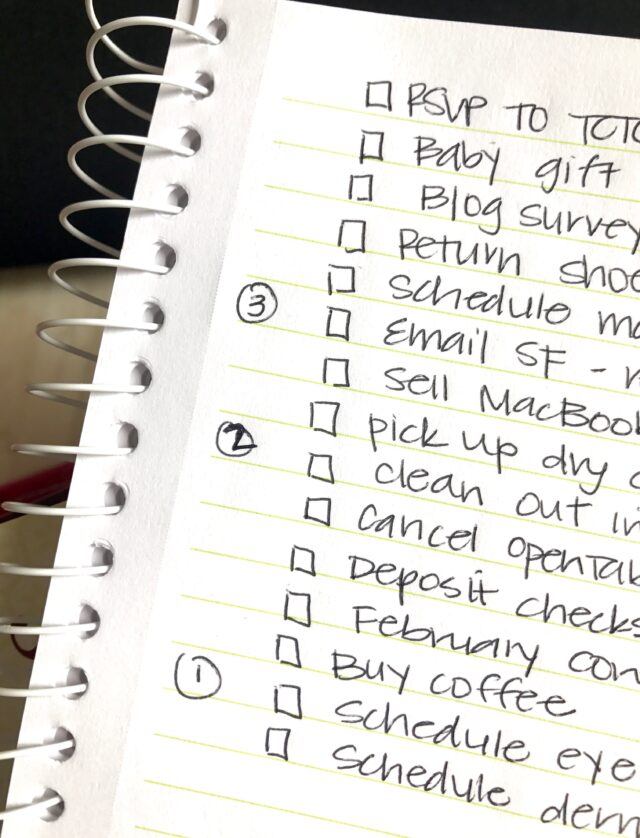

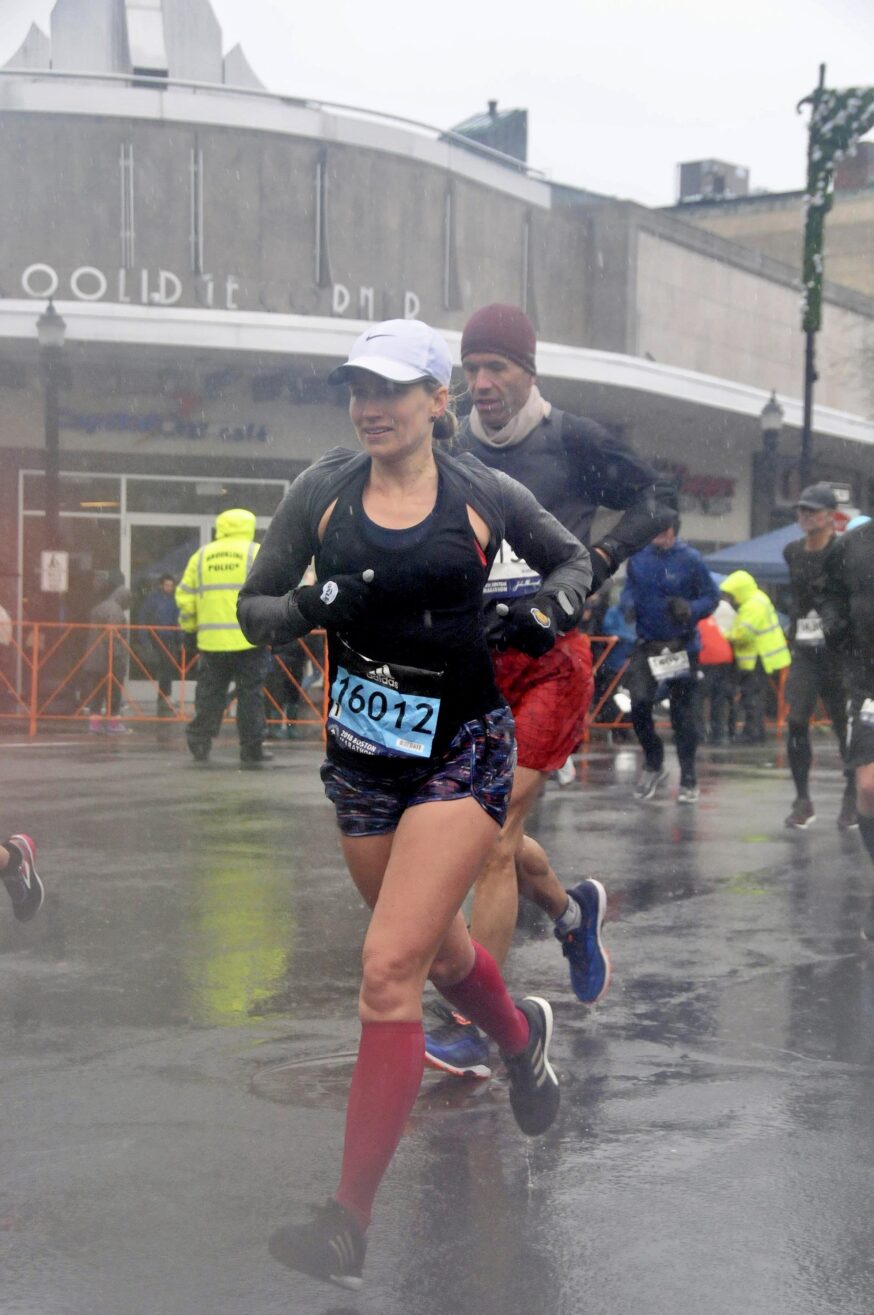
I’ve always loved running in the rain – maybe because I grew up in the desert where it was rare to have a rainy run? Rainy runs are not rare in the South, and they’re a lot easier to enjoy if you know what to wear when running in the rain. In fact, having the wrong gear for a rainy run is a surefire way to feel miserable. Gear is so important. As a runner, that’s not news to you.
If you are training for a race, running in the rain will also help build mental toughness so you’re prepared for less-than-favorable conditions. I ran in a lot of awful conditions leading up to the 2018 Boston Marathon and I was SO glad since it had the worst weather on record with pouring rain and extraordinarily strong winds.
So, in this post I’m going to share my tips to help you run in the rain, so wet weather won’t derail your training.
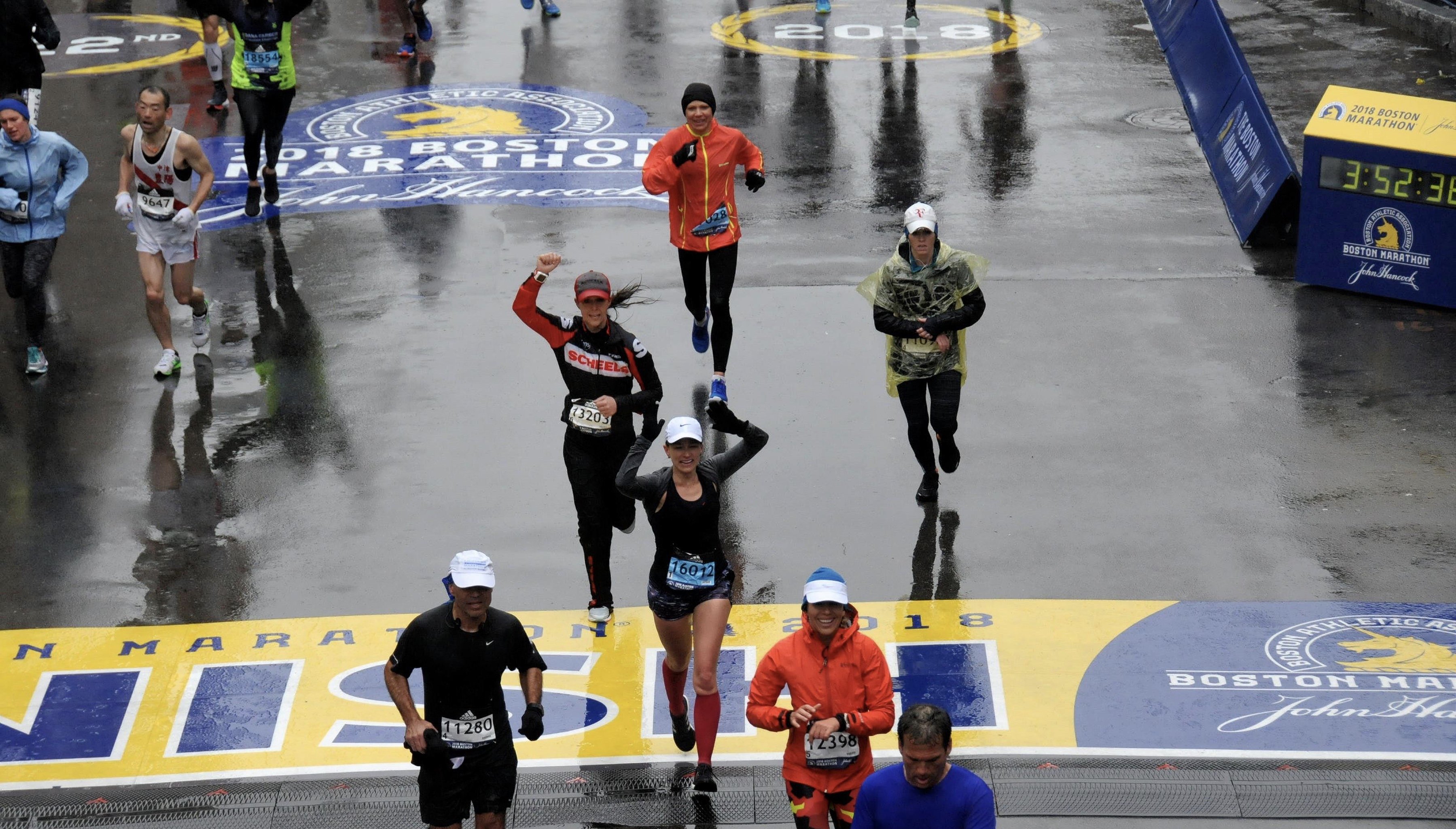
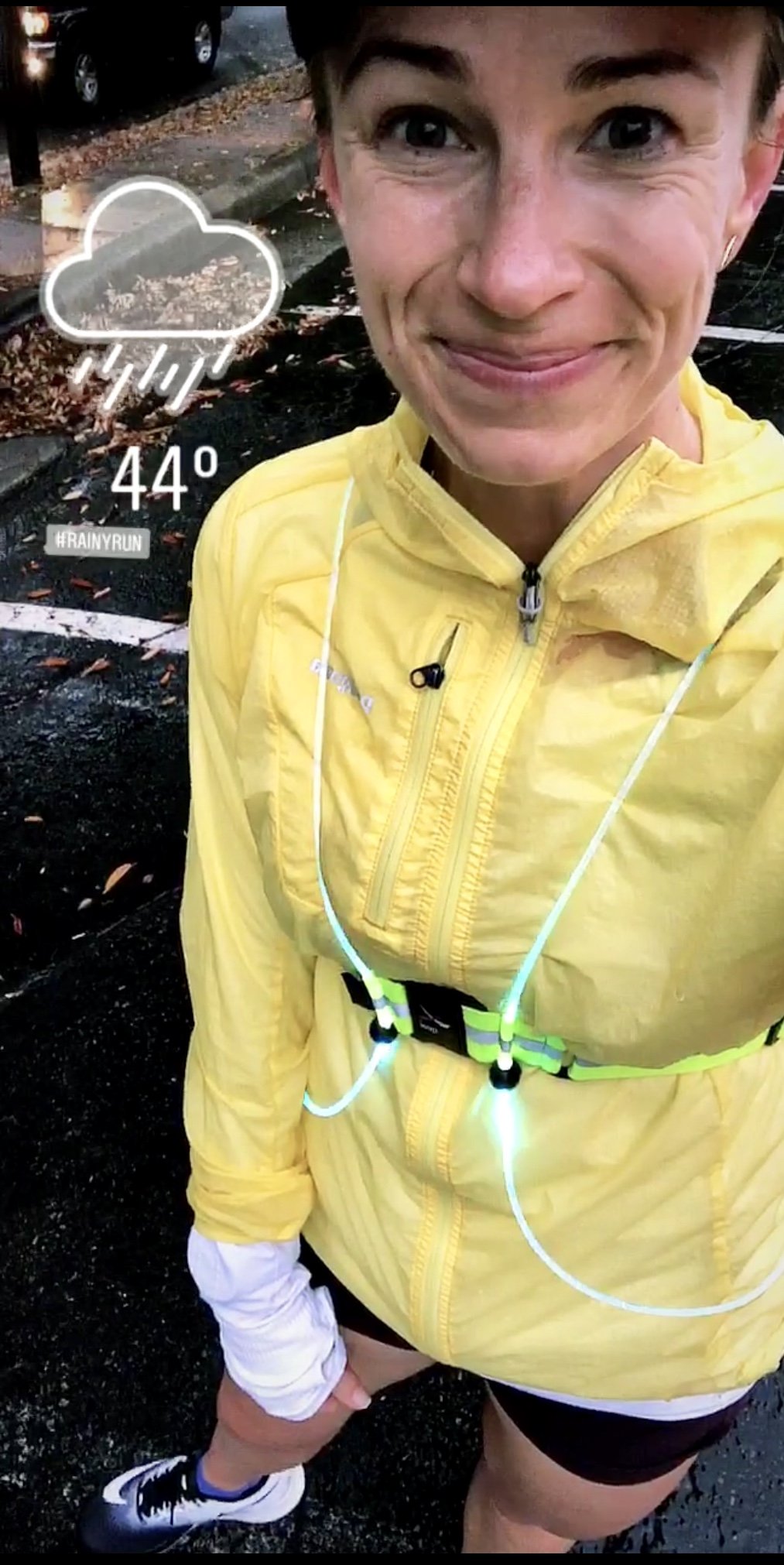
As you’ve probably gathered already, dressing for the rain is the most important step. And after you’re dressed properly, you just have to change your mindset! A rainy day run can be super refreshing if you can let yourself give into the fun of it. Stop worrying about the water in your shoes and your wet clothes, and just decide that you’re going to keep going (unless you’re getting a blister- but here’s how I prevent those).
The hardest part of running in the rain is simply getting out the door. It’s so much easier to keep running if it starts raining mid-run, but it’s so much harder to start running when it’s pouring before you even leave. But, hopefully these tips help get you out the door!
Wearing the right clothing can make or break a run, especially long runs and especially long rainy runs. But, even short rainy runs can get miserable really quick if you’re not dressed appropriately. Just like running in the cold or running in the heat, the right gear is essential for comfort and safety. Here’s what I wear when running in the rain.
A baseball cap or visor helps keep the rain out of your eyes (which gets annoying very quickly) and helps you see better in a downpour. If it’s under 40 degrees, you may want to layer a beanie or ear warmer over your hat. It’s a sexy look, to be sure, but practicality trumps fashion when the elements aren’t great. And it’s what I did for the 2018 Boston Marathon; I didn’t ditch my beanie until the last 2 miles. If you need ear warmth, opt for a fleece earband or beanie. Fleece wicks water well and is very affordable!
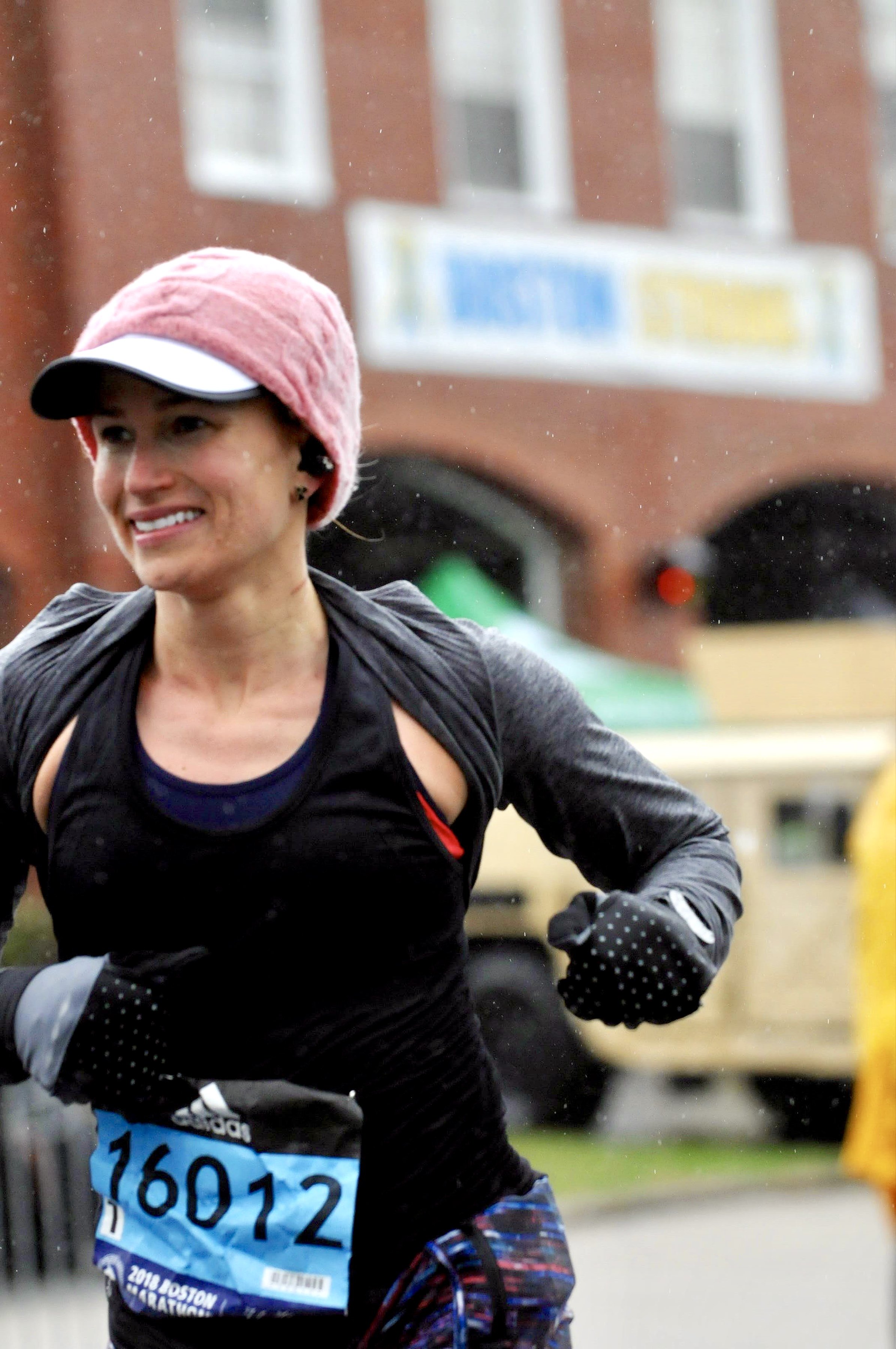
You need to wear clothes that wick, not ones that absorb water, like cotton. Avoid wearing cotton as much as possible. It gets soaked and very heavy, making things miserable. Cotton also makes chafing more likely. I prefer form-fitted shirts since they don’t stretch out as much or flop around when wet. Athleta’s tanks, and Lululemon’s short-sleeved shirts and long-sleeved shirts are my go-to’s.
Similar to tops, I find fitted shorts and leggings are more comfortable in the rain. Baggier shorts can create more friction in the rain, which leads to chafing. I love the Fast & Free Shorts and Fast & Free leggings from Lululemon (I wear a size 4 and I’m 5’1 and 115-120 lbs) for running and they do prevent chafing.
I prefer my thinnest socks for rainy runs since thicker ones get SOAKED and make my feet cold. High quality, fitted running socks (again, no cotton!!) will also prevent blisters which form more easily in wet shoes. Here is a roundup of my favorite running socks.
Even if it’s not very dark, this helps you stand out more to cars. I recommend this Tracer 360 vest since you change it to flash (vs. a solid light) to get drivers’ attention more easily. I wear that vest in every low-light situation and LOVE it. It doesn’t bounce while I run, and it’s held up for years.
Please note that if it’s dark and raining very hard, first consider if it’s safe to run outside. A light vest may not show up in a torrential downpour so you may need to hit the treadmill instead. (Here are tips to run in the dark safely and here are some treadmill boredom tips.)
I love my Patagonia Houdini since it’s extremely lightweight outer layer, but traps heat well to keep me warm. And I can layer it over long sleeves if it’s extra cold. You do NOT want something that’s completely impermeable (like a rain slicker) because you need something that breathes. (Bonus: that Houdini jacket is great for breaking the wind!) You may also want to look into gore-tex running clothes.
I didn’t wear my Houdini in the 2018 Boston Marathon, which had the worst weather on record, because I was worried I would get too hot and I didn’t want to ditch it on the course. But, I definitely should have worn it. I kept my long-sleeved shirt on the entire time!
If you’re running in the cold and rainy weather, you’ll want to prepare to take a hot shower after!
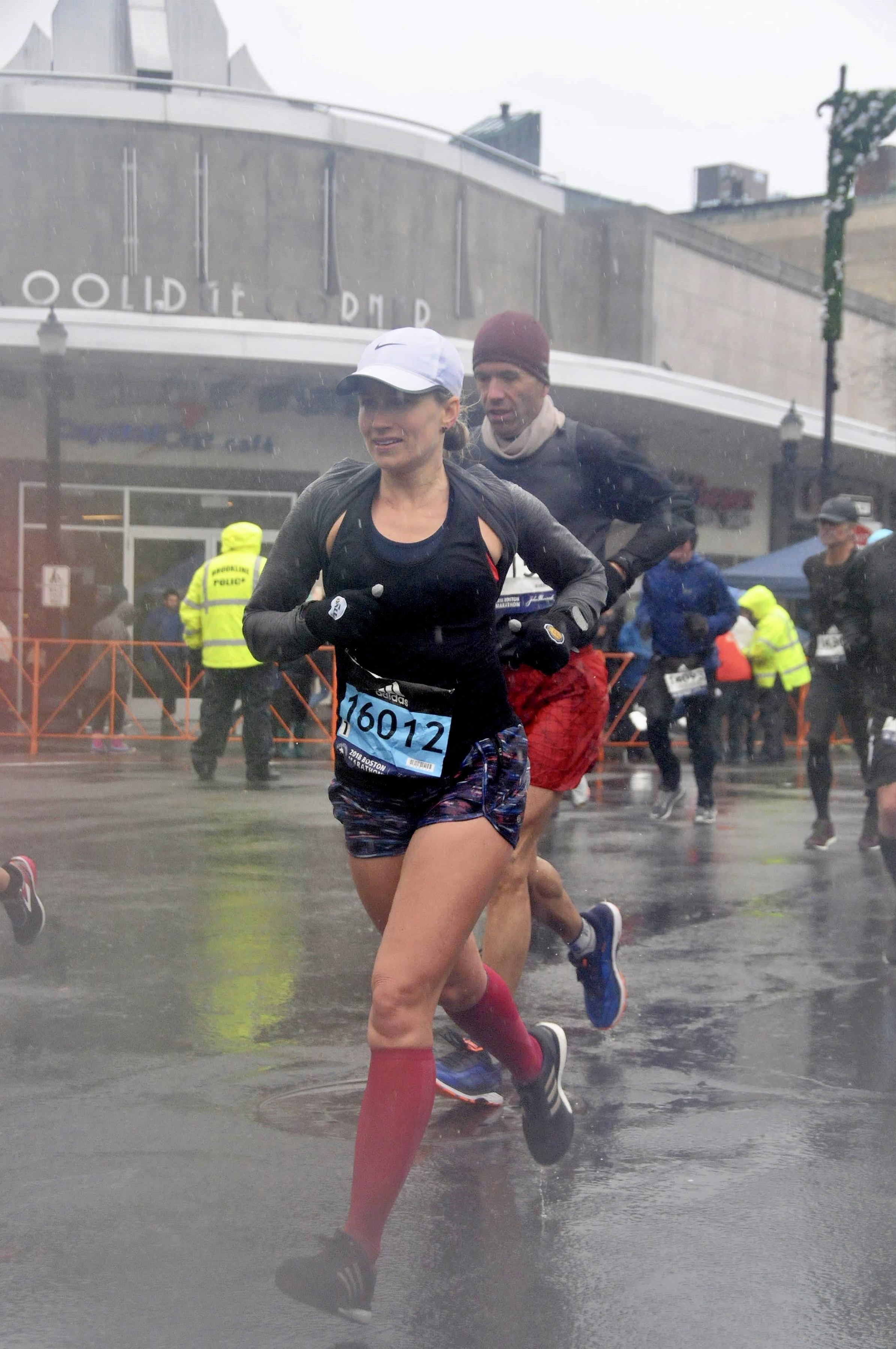

This is probably different for everyone, but some studies show that a lower body temperature can make you more prone to catching a virus, if you’re exposed to one. I also prioritize getting warm and dry IMMEDIATELY after I finish a run. Pack dry clothes, shoes, and socks to change into post-run, if you’re not going home immediately. I always keep a fleece pullover in my car to put on right afterwards.
I also recommend taking off your wet clothes as soon as possible. If you have a dry short sleeve shirt in your bag, that’s better than your soaking wet long sleeve top. Trust me.


Leave a Comment
7 responses to “How to actually enjoy running in the rain”
Do you think those socks really help with plantar fasciitis? I’m struggling with PF in both feet right now. Do they run true to size?
I’m not sure if they help, necessarily, but they certainly FEEL better than my other socks! The increased compression seems to relieve some of the tension. And yes, true to size!
…hehe…says the girl who doesn’t wear glasses. I cannot stand to run in the rain, but dream of it.
I actually do wear glasses. 🙂 I just wear contacts when I run.
Thanks for the tips! It looks like rain for my race tomorrow, so I will keep these in mind.
Enjoy your race!!!
Do you have a favorite pair of gloves to run in the rain? Specifically 30’s and rain….
Thanks for the post!